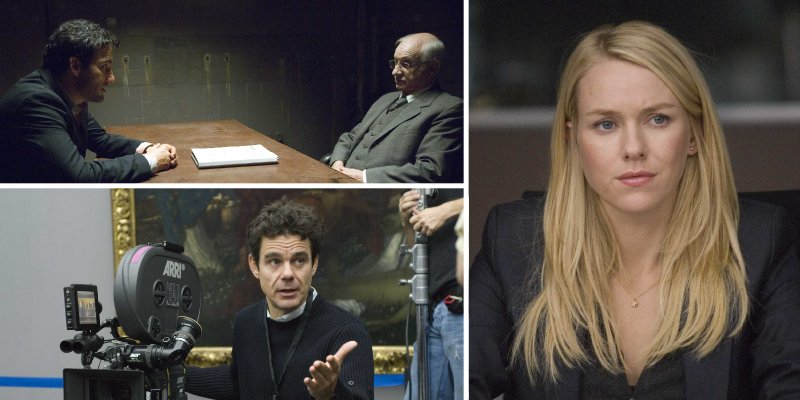It’s a dubious bit of luck that The International, a movie about a corrupt bank, arrives during a major financial crisis. In any other time before this, the film might have been taken as a simple thriller, one of dozens of generic tales of shadowy megacorps and how their dirty fingers turn the screws of every day life and the one man who can stop it, gun in hand. A semi-plausible but above all fictional work that is little more than a simple entertainment to kill an hour or two on the weekend. Today it comes under more scrutiny, its ‘based on a true story’ pedigree given extra stress. But anyone expecting this movie to be about the credit crunch, to lay bare the rotting corpse of fat executive bonuses and subprime lending, will come away disappointed. The International is not one of those movies; it’s one of the former, the shadowy corp vs man with gun sort.
On the surface, anyway.

Tom Tykwer’s new film features Clive Owen as Louis Salinger, disgraced ex-Scotland Yard officer turned Interpol agent. Salinger’s white whale is the International Bank of Business and Credit (or IBBC, the ‘International’ of the title), and as corrupt banks go they’re the ‘financing terrorists and African coups’ kind. Assassins are hired, bodies pile up, and everywhere Salinger and his partner, Manhattan A.D.A. Eleanor Whitman (Naomi Watts) turn, a lead is exinguished. It’s the stuff of classic thrillers, and film is unapologetic about its adherence to formula, as much as it is cheerfully chipping away at that monolithic stereotype as it chugs along. Its hero is scruffy and dogged, fueled by some flickering lamp of moral outrage deep within him. But its villains are grey and cold, men in suits who don’t twirl their moustaches so much as go through the motions demanded by the beast they all work for and don’t quite understand the whims of, waiting for the inevitable day when they too will outlive their usefulness. In some ways it’s a horror film.
If there’s one criticism* of the movie, its that these more postmodern aspects are not thrust up in your face, and for the most part you can go through thinking it a straightforward, by-the-numbers thriller. It may not say anything directly about our current financial woes, but it does speak something of the inscrutable power and life of corporations, the inability to put a gun to someone or something and end them, as every hero in every film — including this one — hope and plan to do. It does so deftly, and to my mind, successfully.
*(This isn’t a negative point for me, quite the opposite, in fact, but viewers should be forewarned)

The International lives up to its name by not easily slotting into any Hollywood or other boxes. It’s very much a European film in style, with a slow pace and a hero who doesn’t jaunt merrily into an elaborate action set piece every three minutes. In fact, there’s only one real action scene, but what a splendid sequence it is, turning the Guggenheim art gallery into the setting for a thrilling gunfight. It has a European film’s childlike fascination with hardboiled detectives and American cop banter; musings on life and death and its consequences as aspects of everyday conversation. It’s a quiet film about the menace of quiet things. Like most European films, there is a level of polish on both sides of the camera that makes me smile. It’s not flashy at all, just assured.
Comparisons will inevitably be drawn between this and the current heavy hitters of the action thriller, the James Bond & Bourne series; such comparisons are ridiculous, as The International is more a cerebral arthouse movie that uses the tropes of the thriller genre, than a film where the action is the highlight. But even then it manages to surprise you with a cracker of an action scene.
Can’t say I’ve seen many movies which managed to surprise me so often, so well, and in such an artful manner.

